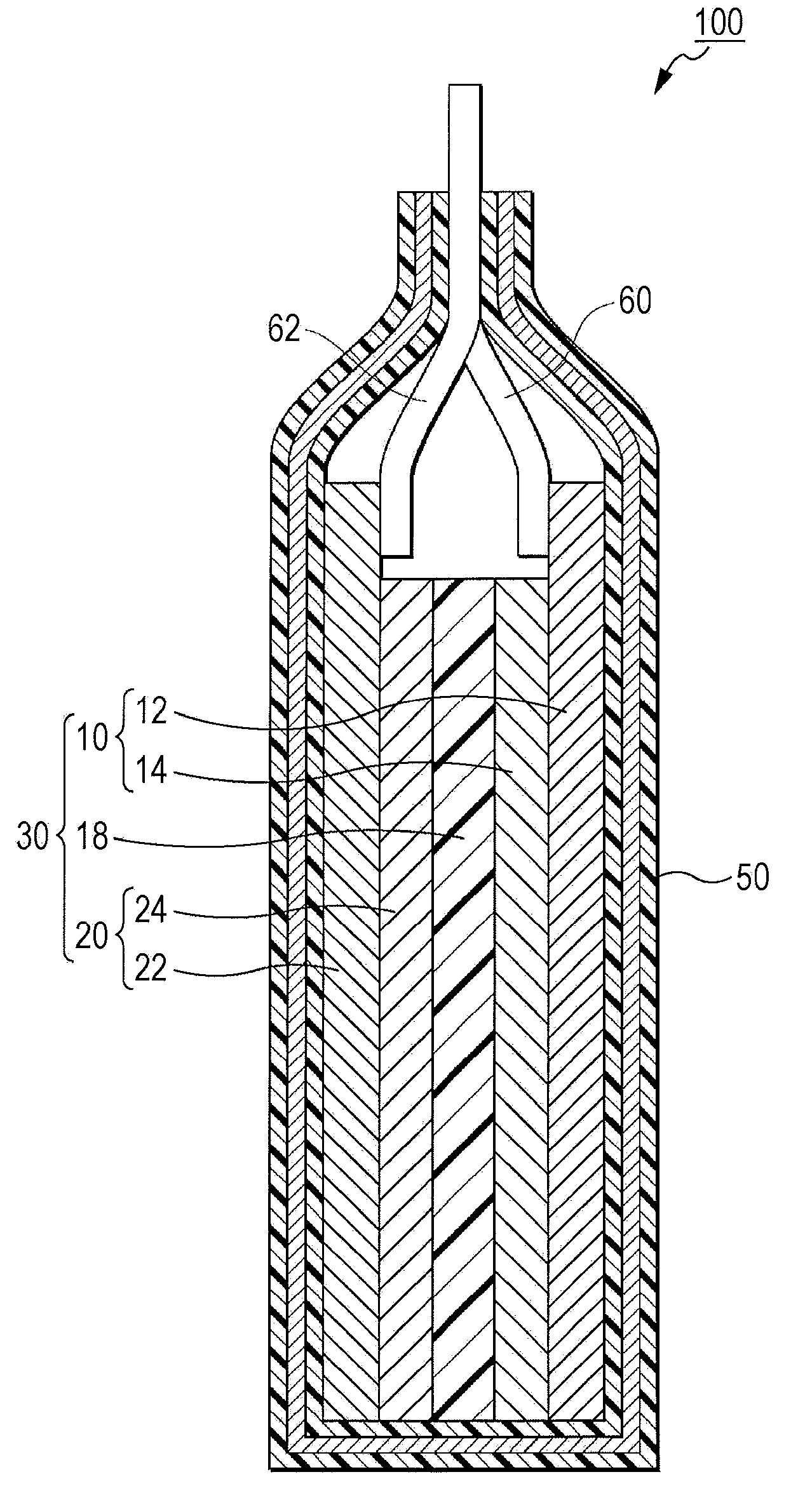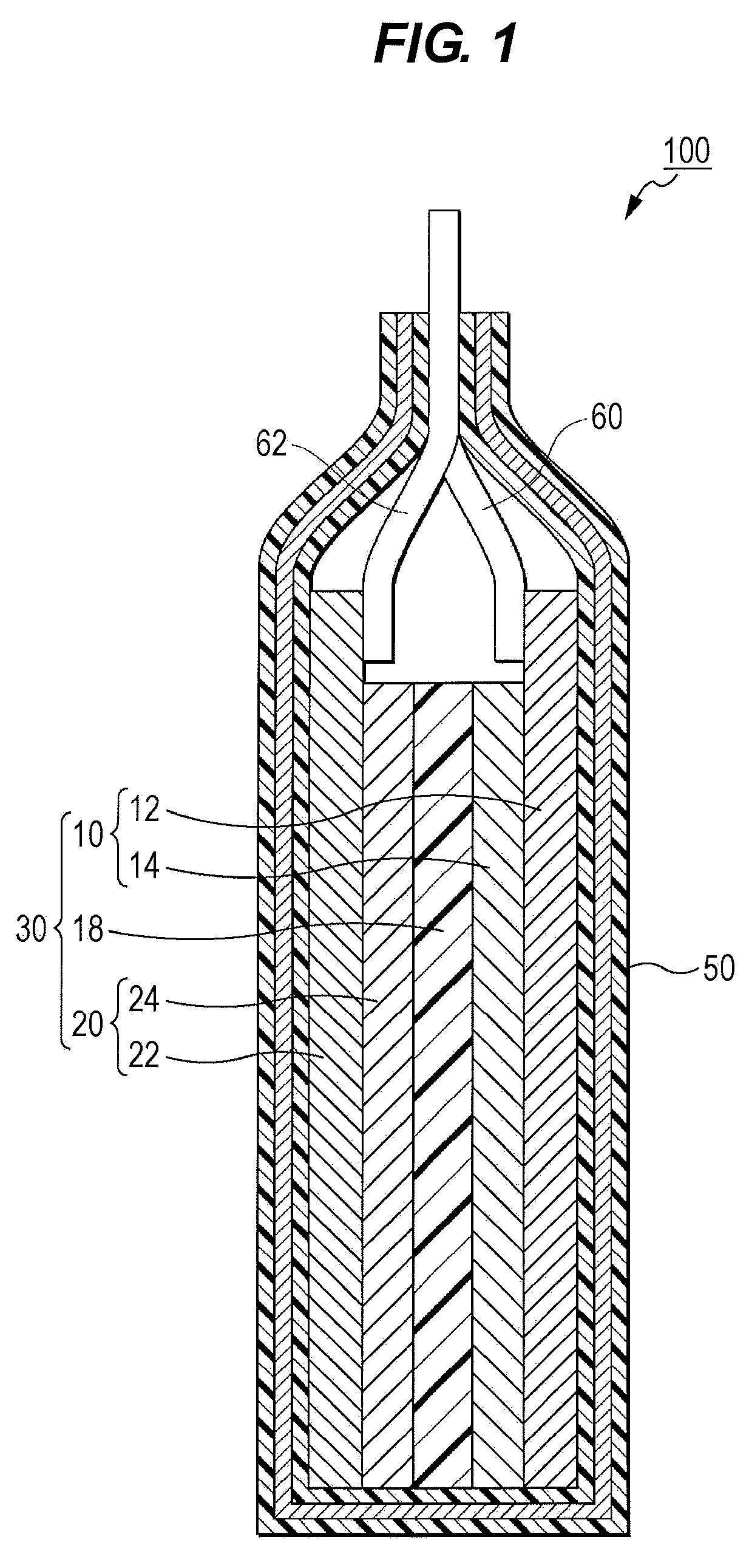Lithium-ion secondary battery
- Summary
- Abstract
- Description
- Claims
- Application Information
AI Technical Summary
Benefits of technology
Problems solved by technology
Method used
Image
Examples
example 1
[0033]V2O5, LiOH and H3PO4 were prepared at a mole ratio of about 1:2:2 and heated at 160° C. for 8 hours in a sealed container to fire an obtained paste at 600° C. for 4 hours in the atmosphere. It was found that the particles obtained in this manner were β-LiVOPO4. The LiVOPO4 particles and acetylene black were weighed at a weight ratio of 90:10.
[0034]The mixture and polyvinylidene fluoride (PVDF) as a binder were mixed and the resultant was dispersed in N-methyl-2-pyrrolidone (NMP) as a solvent to prepare a slurry. Then, the weight ratio of the mixture and PVDF in the slurry was adjusted to 90:10. After the slurry was applied onto an aluminum foil as a current collector, dried, and pressed, an electrode (positive electrode) in which an active material layer was formed was obtained.
[0035]Next, synthetic graphite as a negative electrode and a solution of 5 wt % of N-methylpyrrolidone (NMP) of polyvinylidene fluoride (PVDF) were mixed to have a ratio of synthetic graphite:polyvinyli...
PUM
 Login to View More
Login to View More Abstract
Description
Claims
Application Information
 Login to View More
Login to View More - R&D
- Intellectual Property
- Life Sciences
- Materials
- Tech Scout
- Unparalleled Data Quality
- Higher Quality Content
- 60% Fewer Hallucinations
Browse by: Latest US Patents, China's latest patents, Technical Efficacy Thesaurus, Application Domain, Technology Topic, Popular Technical Reports.
© 2025 PatSnap. All rights reserved.Legal|Privacy policy|Modern Slavery Act Transparency Statement|Sitemap|About US| Contact US: help@patsnap.com


